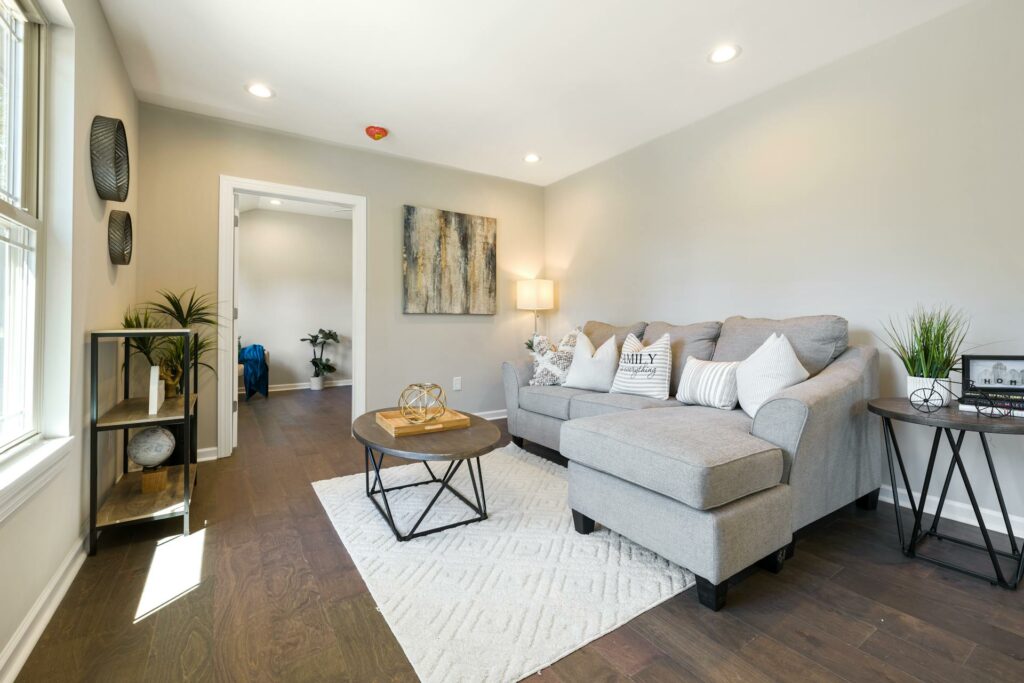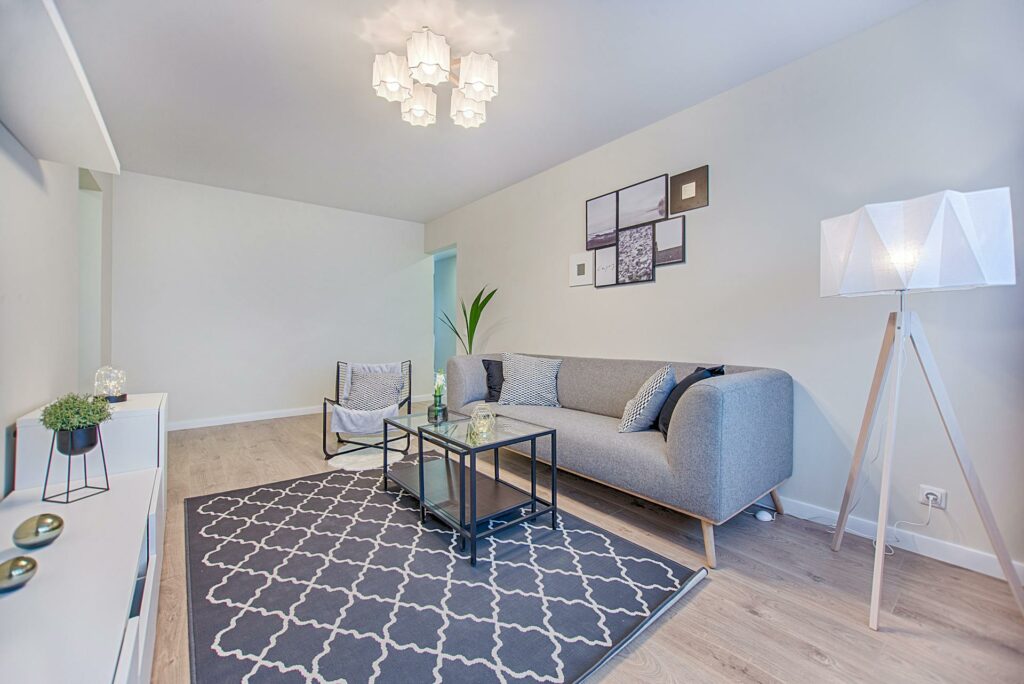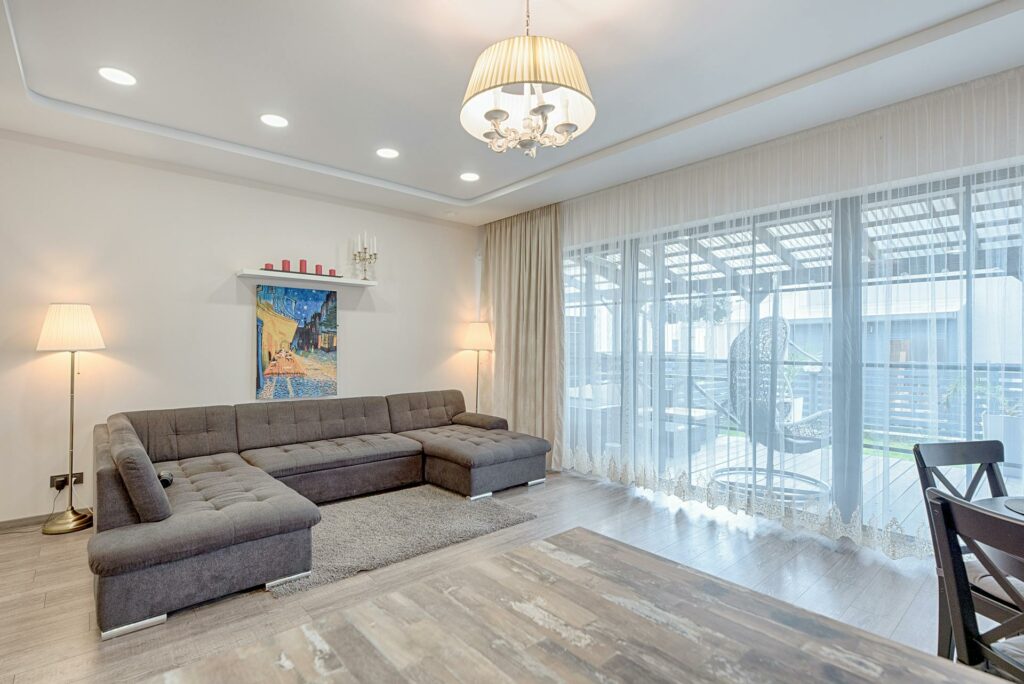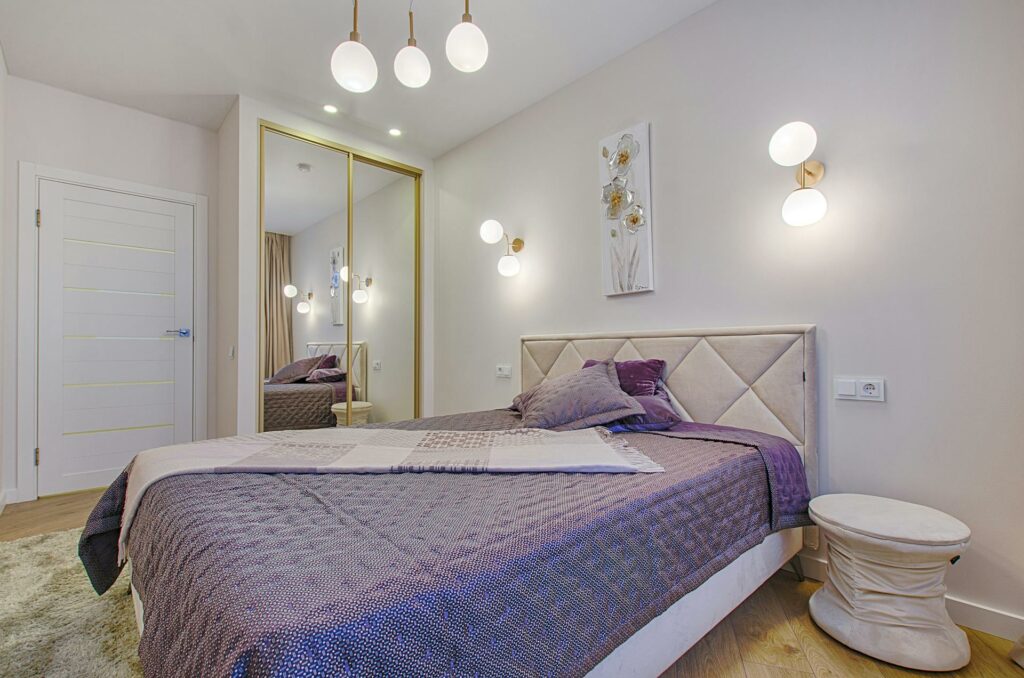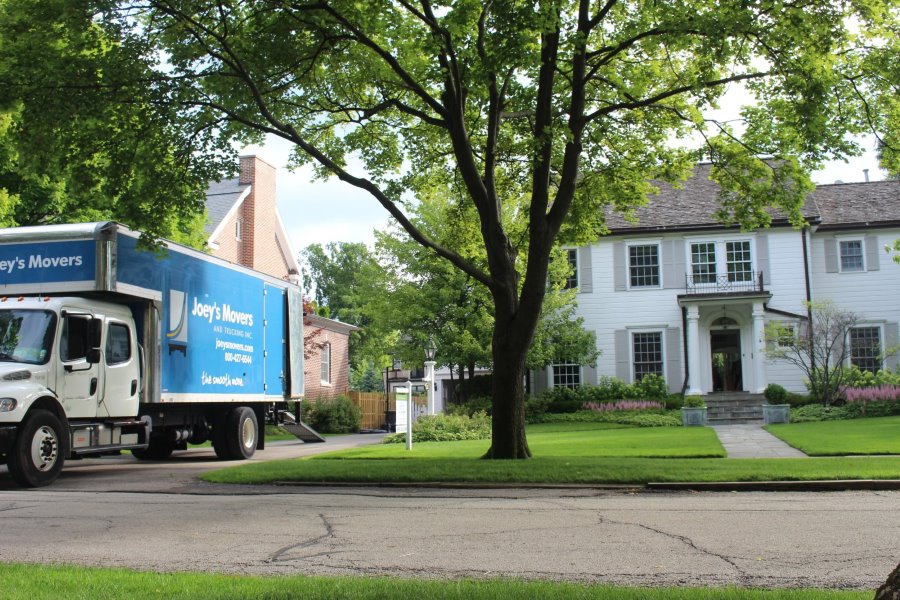A well-staged home sells faster and often for a higher price. But if you’re staging a house for quick sale, are you doing it strategically?
Many sellers focus on making their home look attractive to buyers, but they overlook the strategy and psychology behind it. To stage your home effectively, you need to do more than make it look clean and appealing. You need to help the potential buyer make an emotional connection with your home.
This guide covers the psychology and strategy of staging a home for quick sale. We will also share home-staging tips that can help your moving process and your future storage considerations.
Need temporary storage between home sales? Call (847) 674-7779 or request a quote—we’ll hold the space while you close the deal.
The Psychology Behind Home Staging and Why It Works
Most people think home buyers make decisions based on facts like square footage, price, school district, and features. But studies show that’s not how the brain works. All these things help draw attention to the home. They also help the buyer come to a final decision. But even if a home has all the features the buyer wants, they may still choose another home that they fell in love with on sight instead.
Buying a Home Is an Emotional Decision
Did you know that within just seven seconds of walking into a home, a buyer has already formed a strong first impression? This is known as theSeven-Second Rule in real estate, and it is a major factor in determining whether a buyer will pursue a property.
If a buyer feels an immediate emotional connection with a home, they are far more likely to overlook minor imperfections and missing features. They are also far more likely to make an offer on the home. However, if the home does not resonate with them emotionally within those first few seconds, even a property that perfectly meets all their practical needs will struggle to win them over.
This happens because home buying is not just about square footage, amenities, or price. While logic and finances play a role, the heart usually makes the decision before the brain catches up.
Buyers Are NOT Shopping for a House
According to the National Association of Realtors, staged homes help buyers visualize the house as a home, and realtors saw buyers offer one to five percent more on staged homes compared to similar non-staged homes.
Buyers don’t look for a house. In reality, they are looking for a home. They want to step inside a house and instantlyfeel at homeas they imagine their lives unfolding in that space. The right atmosphere can make a property unforgettable, while an uninspiring or poorly presented home can drive buyers away before they even explore its full potential.
The Three-Stage Buying Process in Home Buying
Here is how buyers choose the home for them.
- Emotional Connection.Buyers walk in and feel at home. If they step inside and instantly imagine living there, they’re more likely to make an offer.
- Visualization.During the tour, buyers see themselves in the space. They imagine relaxing in the living room, cooking in the kitchen, and waking up in the master bedroom.
- Justification.Once they are emotionally invested, buyers validate their decision by checking the features and details. They look at all the features they want, the square footage, the budget, and everything that helps them feel like it would be a logical choice.
A well-staged home tells a story. It also highlights the home’s best features while making potential flaws less noticeable. Now that we know how a homebuyer’s mind works during a tour, let’s discuss home-staging ideas that lead to better sales opportunities.
Pre-Stage Decluttering: What to Remove and What to Keep
A cluttered house can create a negative first impression, making it difficult for buyers to form an emotional connection. Decluttering makes your home look more warm and inviting during the tour, and it reduces packing stress and moving costs later! Fewer items mean less packing, fewer moving boxes, and potentially lower moving expenses.
By strategically removing unnecessary items and organizing what remains, you simplify the process of staging a house for quick sale and create a smoother transition to your next home.
Personal Items
Personal items make it harder for buyers to imagine themselves living in your home. Anything tied to your family, hobbies, or personal beliefs can be distracting and should be packed away. This includes:
- Family photos, picture frames, and personalized artwork
- Religious or political items
- Trophies, awards, or certificates
- Collections (figurines, sports memorabilia, niche décor)
- Monogrammed items or custom wall decals
While these can give a home personality, they will only resonate with buyers who share your likes, interests, and beliefs. When you are staging your house for a quick sale, they are better off packed and stored away for your move.
Excess Furniture
Too much furniture can make rooms feel small, cluttered, and less functional. Removing bulky or unnecessary pieces makes rooms feel larger and more inviting. This includes:
- Oversized sectionals or recliners that take up too much space
- Extra side tables, ottomans, or chairs
- Furniture that is designed to reflect your specific hobbies or religious and political beliefs.
- Large freestanding bookcases and plant shelves that will be moving with you
- Specialty furnishings like playpens, beanbags, and bar carts
- Storage bins and storage items that disrupt the room’s openness
Only keep a few essential furniture pieces that enhance a room’s functionality. You want the room to feel open and inviting while leaving potential buyers lots of room to imagine their own furniture in it.
Seasonal Items
Holiday decorations and out-of-season items remind buyers that the home belongs to someone else. Keep the house neutral and seasonally appropriate to help enhance its appeal. Discard, donate, or pack up and label these things for moving day so they don’t distract the buyers.
- Holiday décor, both indoors and outdoors
- Out-of-season clothing
- Seasonal gear like ski equipment and beach toys.
- Heavy winter blankets or summer patio furniture if they are out of season
Also, remove anything that takes up valuable storage space buyers will look at, even if it is neutral and in-season. You should accent these areas with a few appropriate items at most.
Countertop Clutter
Kitchen and bathroom countertops should be clear, spacious, and tidy. A cluttered counter makes the kitchen feel smaller and less organized, while a minimalist look suggests cleanliness and efficiency. This includes:
- Small kitchen appliances like toasters, coffee makers, blenders, and electric skillets, unless they enhance staging.
- Excessive cooking utensils, spice racks, or paper towel holders
- Anything that does not traditionally belong in a kitchen, such as tablets, personal hygiene items, loose batteries, and clutter-catcher drawers..
- Extra décor or unnecessary accessories like coasters, novelty towels, and potholders.
Keep a single neutral statement piece like a fruit bowl or a new cutting board with 2-3 strategically placed utensils on it. Only keep essential kitchenware that can be neatly stored.
What to Keep for Staging Success
Once the clutter is gone, the goal is to create a warm yet neutral environment that appeals to the widest range of buyers. Keep only items that enhance space, flow, and visual appeal.
- Décor should be simple, elegant, and universally appealing. Stick to neutral colors and light accents that complement the home’s best features.
- Furniture should be arranged to create defined spaces while keeping rooms open and inviting.
- Keep storage areas open and spacious-looking. A cluttered, overstuffed storage area suggests there isn’t enough room in the home.
Pro Tip:If your furniture is worn, outdated, or over-personalized, consider renting modern staging furniture to enhance the home’s appeal. Joey’s Movers can also help take the stress out of the process with our Pre-Move Decluttering Services.
Storage Options for Sellers
One of the biggest challenges of staging a house for quick sale is finding a place for everything while making the space look open and inviting. Buyers look in closets, cabinets, basements, and garages, so simply stashing clutter out of sight won’t work. Instead, sellers need smart storage solutions that free up space while keeping necessary items accessible.
Temporary Storage: Off-site storage units or portable containers are ideal for bulky furniture, personal items, and seasonal décor. They make rooms look bigger, prevent overcrowded closets, and reduce moving stress by getting a head start on packing.
Strategic Organization: Use labeled bins, matching baskets, and under-bed storage for items that need to stay. Closets should be no more than half full, countertops should be clutter-free, and garages should have neatly stacked storage bins instead of random piles.
Choosing the right storage method ensures your home is buyer-ready and makes your upcoming move easier. If you need a temporary storage solution in the Chicagoland area, we offer secure packing and storage solutions with transparent pricing.
How Decluttering During Home-Staging Saves Money on Moving Expenses
Decluttering before selling a home makes staging more effective and reduces moving costs. By getting rid of unnecessary items early, sellers can cut down on expenses in several ways.
- Packing materials and labor costs. Fewer items mean fewer boxes, less packing supplies, and potentially lower labor fees.
- Moving truck space and transportation fees. Fewer items mean a smaller truck, less gas, and potentially fewer trips to collect everything. Long-distance moves are often priced by weight, so decluttering can lead to significant savings.
- Packing and unpacking time. Moving only what you truly need makes packing and unpacking faster and easier. This saves time and effort, and it can lower labor costs for packing and unpacking services.
By decluttering before staging, sellers create a more appealing home for buyers, streamline their move, and reduce costs.
Key Home Staging Tips & Strategies
Successful home staging creates an emotional connection with buyers, helping them envision themselves living in the space. Here are some tried and tested strategies expert home stagers use to make homes feel inviting, spacious, and market-ready.
The 3-Foot, 5-Foot Rule in Staging
This simple yet effective rule ensures that a home looks great both up close and from a broader perspective.
- At 3 feet, surfaces should be spotless, clutter-free, and well-organized. Tables, countertops, and shelves should have minimal, intentional décor, like a vase of fresh flowers or a stylish tray with neatly arranged items.
- At 5 feet, the entire room should feel spacious, balanced, and neutral. Furniture placement should enhance flow, and neutral colors and textures should be used to create a cohesive look.
Applying this rule helps create a home that looks both polished in listing photos and inviting during in-person showings.
Depersonalizing is the Most Important Thing Sellers Must Do When Staging
As we discussed above, depersonalizing and neutralizing the home is crucial. Buyers should feel like they are stepping into a new beginning rather than someone else’s space.
- Remove family photos, personal collections, and bold décor that reflect too much personality.
- Stick to neutral colors on walls, furniture, and décor to create a universally appealing look. Soft whites, beiges, and greys make rooms feel fresh and spacious.
- If you use a scent, keep it subtle and welcoming, like cinnamon, vanilla, or citrus. Strong artificial fragrances can be overwhelming or trigger scent sensitivities.
- Keep décor simple and elegant. A few well-placed items can enhance the space without making it feel cluttered.
A neutral home allows buyers to mentally move in, making them more likely to make an offer.
How to Prepare Your House for Staging
A well-staged home requires more than just rearranging furniture. Follow these steps to ensure your home is market-ready:
- Deep clean every room, including carpets, windows, walls, and baseboards. A spotless home signals that it has been well cared for.
- Rearrange furniture to improve flow and maximize space. Avoid blocking windows and doorways, and use area rugs to define spaces.
- Improve lighting by replacing dim bulbs with brighter ones and letting in natural light. Well-lit rooms feel more open and welcoming.
- Do minor repairs like paint touch-ups, fixing leaky faucets, cleaning grout, and tightening loose handles. Buyers notice small details, and quick fixes can make a big impact.
- First impressions start at the curb. To enhance curb appeal, mow the lawn, repaint the front door, plant fresh flowers, and clean walkways.
The Three Key Factors in Staging
- Flow and Space. Arrange furniture to create an open, functional layout that allows buyers to move freely through each room. Remove any excess furniture to create a more open appearance.
- Lighting and Ambiance. A well-lit home feels more inviting. Maximize natural light during the day and use warm, soft lighting in the evening to create a cozy atmosphere. Use bright bulbs in poorly lit areas to help brighten the space.
- Neutrality and Style. Use neutral colors and simple décor that appeal to a broad range of buyers. Thoughtful touches like fresh flowers or solid colored, textured throw pillows can add warmth without overpowering the space.
By following these home-staging strategies, sellers can increase buyer interest, improve listing appeal, and potentially sell their home faster for a higher price.
Staging Tips for Each Room
While staging techniques vary by room, the goal remains the same: Create a welcoming environment that maximizes space, highlights key selling points, and leaves a lasting impression.
Living Room: Create an Inviting, Spacious Feel
The living room is one of the first areas buyers see, so it should feel open, comfortable, and welcoming.
- Remove bulky furniture to open up space and create better flow.
- Use mirrors strategically to reflect light and make the space feel larger.
- Position seating to create an open and balanced space rather than pushing everything against the walls.
- Add soft, neutral-toned throw pillows and a cozy area rug to make the space feel warm and inviting.
Kitchen: The Selling Point of Any Home
The kitchen is one of the most important rooms in the home. Buyers want to see a space that feels clean, organized, and cohesive.
- Clear countertops to create an uncluttered and spacious atmosphere. Keep only one or two decorative items like a fresh fruit bowl or a stylish cutting board.
- Organize cabinets and pantry shelves neatly to showcase storage potential. Buyers will open drawers and cabinets, so avoid overstuffing them.
- Upgrade cabinet handles and faucets to give the kitchen a refreshed look without a full remodel.
- If appliances are outdated or clash with one another, consider contacting the manufacturers to replace the doors and outer casings to save on the cost of replacing the whole thing. Make sure all major appliances are the same neutral color to increase cohesiveness.
Bedrooms: Make It Feel Like a Luxury Retreat
A bedroom should feel like a relaxing sanctuary where buyers can envision themselves unwinding at the end of the day.
- Use neutral bedding with soft textures to create a clean, hotel-like aesthetic. White or light-colored linens make the space feel fresh and inviting.
- Remove excess furniture to make the room feel more spacious. A clutter-free space appears larger and more relaxing.
- Stage closets by keeping them only half full and removing out-of-season belongings. Buyers will open closets, and an organized, spacious-looking closet suggests ample storage. Consider adding matching storage bins or baskets for a polished look.
- Add bedside lamps with warm lighting to enhance the cozy atmosphere.
Bathrooms: Clean, Bright, and Spa-Like
A well-staged bathroom should feel fresh, modern, and luxurious. Simple touches can make a big difference in buyer perception.
- Display white towels, fresh soap, and candles to create a clean and spa-like aesthetic.
- Hide personal items like toothbrushes, razors, and beauty products to make the space feel unused and fresh.
- Ensure grout, mirrors, and fixtures are spotless. Water stains, mildew, and soap scum make the space look neglected.
- If the tub, toilet, or sink is heavily stained, replace or refinish them. Clean hard water stains and deposits.
- Switch out old shower curtains, replace cabinet hardware, or add a fresh bath mat for a quick refresh.
Home Office: Show Functionality and Productivity
A well-designed workspace should feel professional, functional, and free of distractions.
- Keep desks clean and free of clutter. A tidy workspace suggests productivity and organization.
- If possible, position the desk near a window to highlight natural lighting. A bright, airy office space is more inviting than a dark, enclosed area.
- Use minimal, neutral décor to add personality without being overwhelming or over-personalized.
FAQs
What is the most important thing a seller must do when staging their home?
Depersonalize and neutralize. Buyers should feel like the home could be theirs and imagine how they will fill the space with their own stuff.
How do I prepare my house for staging?
Clean, declutter, rearrange furniture, and make minor upgrades like fresh paint and new lighting.
What are the three factors to consider in staging?
Flow and space, lighting and ambiance, and neutrality and style.
Final Advice
Staging a home for quick sale makes it feel inviting and allows buyers to picture themselves living there. It also encourages early decluttering, so there’s less to pack and move later. With a little preparation, sellers can create a space that stands out, sells quickly, and makes their move smoother.
You do not have to do it alone! Joey’s Movers offers services to make your home-staging less stressful, such as decluttering, packing and unpacking services, and storage solutions.
Call us today at (847) 674-7779, or get a free online quote.
Photos by Vecislavas Popa and Curtis Adams


